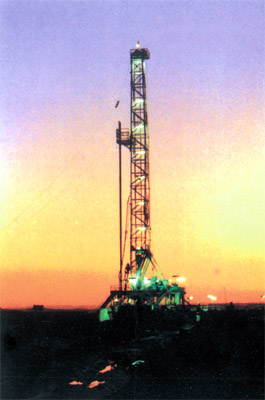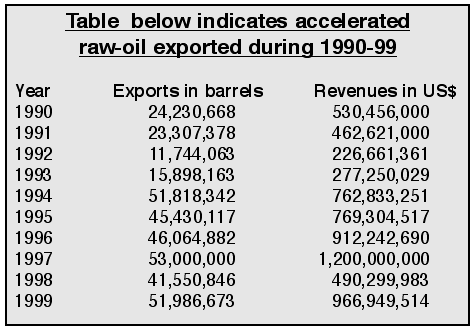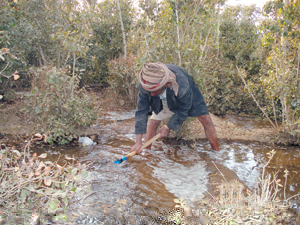
Yemen Oil production: The available facilities and future horizons [Archives:2001/21/Business & Economy]
May 21 2001

Reported by:
Mahyoub Alkamali
The Japanese oil association has prepared a study on the available oil facilities to increase investment in the this field in Yemen. The study which cost US$ 2 million aims at knowing the volume of raw oil reserved and stored, and investment opportunities; following information that shows deterioration of production quantities in Mareb basin and warns of exhaustion in the area wells’ reserve within a period not exceeding 2005.
New Oil Surveys.
The Japanese study has covered six regions: Aden Gulf Basin, Bilgaf of Mukalla, the Marine part, Seyoun Almasila Basin, The Empty Quarter Basin Mareb Branched Basin, Jiza’e Basin. The study also deals with data analysis on exportation wells and the precipitating basins.
New Maps and fields.
Basins’ evaluations, have been completed by the Japanese. Maps and samples concluded would assist oil investment companies, in case investment is decided. A western geo-physical America co. has implanted the first stage of marine survey convening 3,000 km. This comes as a part of the area that extends around 80,000 kms along the coasts of Hadramout, Mahara up to Socotra.
According to sources at the oil Exploration Authority, the oil department is intending to divide the coastal area to various oil sectors and propose them to those oil companies desiring to explore oil in Yemen.
Its worth mentioning that there are new oil sectors, introduced for market competition in investment..
These sectors are: 6,7,8 in Shabwa governorate; and 38 in Socotra island in addition to two sectors in Hodeidah, namely sectors: 25 and 26.
Recent Explorations
The oil exploration authority at the Ministry of oil informed Yemen Times of oil explorations conducted during the year 2000 in two regions. The first was in Hadramout sector 53 where first exploration well had reached production of 5000 barrels per day; and the second was in sector c1 in Shabwa where dense gas with oil had been found. Four exploration wells also, had been dug, the first produces 14 00 barrels of oil per day in addition to 70 millions cubic feet of gas. Another well produces 1000 barrels of oil per day.
Current year 2001 plans to achieve not less than 100 wells in the productive sector, and 20 wells in the exploration sectors.
Yemen restores 4 exploration sectors
The Yemeni-Saudi Borders accord, signed in June 2000, has offered Yemen four exploration land sectors. With this the total exploration sectors become 60. Production power of oil fields in Mareb, Shabwa and Hadramout have exceeded 460 000 barrels per day.
Moreover, the number of American, Canadian French and Arab companies working in the productive sectors has increased. Similarly, the number of exploration companies has become more than 15, working in around 24 excellent-sectors. Hunt Co. represents one of the main companies. It works in sector 18, in Mareb and Al-Jouf. Canadian-nexen, another main company, is working in sector 14 at Almasila in Hadramout Total, French, is working in sector 10 east of Shabwa governorate.
Exportation and revenues increased
During the current year Yemen is expected to export 59 975 000 barrels at a rate of US$ 2. Revenues here are estimated at 1 319 450 billion.
Oil sales form 95% of the total valued Yemeni exports. The balance-sheet depends mainly on this source, a matter which constitutes weakness to promote local exports.
Regarding oil refining, an execution of development projects has been followed in refineries of Aden and Mareb. Two reserves for raw oil have been re-built in Aden refinery with a capacity of 50 000 tons and cost of US$ 7,5 million and 5 others at Aden refinery.
Future Horizons
In the absence accurate studies of raw oil reserves quantities figures, studies show decrease, especially in Mareb Basin, in contrast to reserved gas which is estimated at 14 trillion cubic feet.
Thus, extension of explorations in new regions would compensate such a decrease in some wells and raise production capacity for Yemen and provide opportunity for more exports.
However, to promote financial revenues, it’s rather preferable to develop none-oil exports; for such products can, to some extent, make up regressions especially in those areas related to agriculture, industry and extraction of other mineral products.

——
[archive-e:21-v:2001-y:2001-d:2001-05-21-p:./2001/iss21/b&e.htm]


